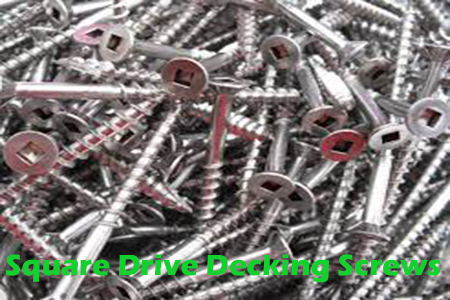There really is no option when it comes time to decide whether you should nail or screw that timber deck down. Hardwood timber patios exposed to our harsh Australian climate of hot to cold, expanding and contracting need to be screwed down although you may notice many decks are still being nailed down today.
By nailing your timber deck verandah and not using the correct deck screws you may saved some time but in the long run will cost you time with the constant maintenance needed to hammer those nails down before someone stubs a big toe on the nail head.
So your patio timber deck has to support the little kids running over it, you’re out laws relaxing on it, and having your BBQ mates re-enacting some sports plays on tv. And today’s timber decks can be complicated constructions as they have a cosmetic role in your back yard. With cascading staircases, fancy timber screens and split level designs, today’s timber decks aren’t the pain simple timber boxes of the past years and your timber decking fasteners needs careful consideration.
All of this suggests that your hardwood timber deck truly needs to hold itself together. You may be adding lots of time and income in creating and constructing a sturdy, beautiful deck that your family members and good friends will benefit from. Just one look at these terrifying cases, of Devastating Domestic Deck Failures, so this shows us that we really should be planning about what timber deck screws is going to hold everything together. By the way, one other big lesson from this write-up do not NAIL your deck to the supporting framework and use big, solid screw fasteners, like batten screws.
Let’s take a look at the benefits of a purpose designed timber decking fastener screw. We’ll start with its physical look, the timber decking screw head, its drive, then the shank with its threading and sharp point.
The timber decking screw head must have a flared, countersunk profile which provides the same flat top surface but with a larger counter sunk load bearing surface area towards the timber decking boards. Well, if you look closely, you’ll see the counter sunk head shape flares out to lay against the board. This design will mean the timber decking fasteners head will resists the tendency to work its way into the wood or out of the timber after it’s been fixed down.
Careful consideration must also be taken to the drive bit your decking screws use, you should want to go with a square drive. A deck screw with using the Phillips drive has one advantage, it’s a reliable common screw head that is used for softwood wood screws and everyone’s toolbox is full of these screwdrivers bits.
When you work with a square drive bit you’ll see its unique ability, the tapered profile of the driver bit definitely wedges within the screws and holds the decking screw in place for whatever angle, even when aiming down to drive into a decking board. The square drive bits arguably endures much less stripping of the timber decking fasteners heads than any other type of design. So you can think of what these benefits do for building effectiveness.
The extreme point and deep sharpened threads are engineered to easily bite into the hardwood and bury itself easily and steadily. Think about how wood retains the screw in place and then think about a nail struggling to do the same job. The counter sunk head is actually partly threaded and tapered so that the threads cuts quickly. However by the time the screw is set and fixed, its head is anchored and not moving anywhere now.
So let’s get back to relaxing out on the back patio timber decking with family and friends having a few cold beverages and not worrying about the constant maintenance from those popping deck nails.

